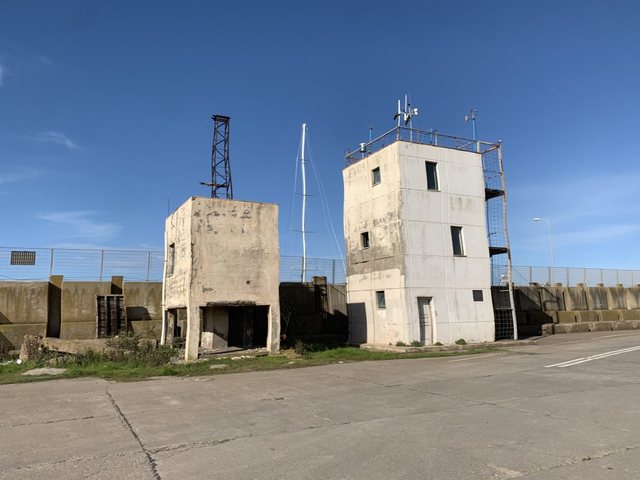
The history of the first meteorological station in Albanian territory


In the distant year 1868, the Austrian consul in Durrës installed the first meteorological station in the Albanian territory, which at that time was controlled by the Ottoman Empire.
Bujar Bala has been working as a dispatcher at the Durrës fishing port for 45 years. Along with the arrivals and departures of motorized fishing boats in the port basin, he also reports on sea and weather conditions. But the sources of meteorological data have changed over time.
"For several decades, even though we were isolated, we also received data from hydrometeorological stations in Rome," recalls Bujari.
From the window of his studio, the elderly man monitors the sailing of fishing boats. Computer-controlled devices also track ship traffic near our coasts.
According to Bujar, marine and weather data have been provided for some time by the Port Authority, while now fishermen are supplied with information from other coastal points, as well as from the ports of neighboring Italy.
Bala says that through telephone waves, he can follow and communicate with fishermen even from his family home in Shijak.
The fisheries dispatcher recently learned that the first nationwide meteorological station was installed in Durrës, almost 170 years ago.
In the distant year 1868, everything happened in a well-preserved apartment even today, a few hundred meters from the City Hall and the "Saint Lucia" Catholic Church.
Zef Tedeschini, a descendant of the family, told BIRN that, along with documents in Albanian, he has also collected data from the Institute of Hydrometeorology, the Austrian Academy, as well as several well-known Vienna newspapers from the second half of the 19th century.
“Vincenzo Ballarini, an intellectual born in Shkodra and of Croatian descent, had been appointed consul of Austria and lived in the Tedeschini house, where he was the family's son-in-law,” explains Zefi.
In the first week of October 1868, specialists brought from Austria a complete inventory of barometers, cylinder rain gauges, thermometers, and aerometers to draw marine water samples.
"They were installed mainly in the courtyard of this apartment," says the Tedeschins' sucker.
A courtyard that has preserved the light of the last century, this of the family, and where for about 100 years the rainwater cistern has been preserved, which still supplies the well with a high vault today.
"The weather vane, for the direction of the wind, was mounted on the flagpole, which was located at the French consulate in Durrës," says Zefi.
The inventory of equipment that Consul Ballarini invested in quickly yielded results.
The data, collected every morning and evening, was transferred to Vienna within 24 hours, while the central newspapers of the Austrian capital published them, along with tables from other European countries.
Durrës in 1843 had only 1,200 inhabitants.
But thanks to the coastal city station, Albania had its own page with data in the Austro-Hungarian space, although on the map of Europe it was part of the Ottoman Empire.
Consul Ballarini, every month from the Durrës measurement sites, provided data on temperatures, atmospheric pressure, relative humidity, fog and cloud cover, as well as precipitation.
"The last data stored by the Durrës station dates back to 1877, a few years after the death of Consul Vincenzo Ballarini," says Zef Tedeschini, while emphasizing that the first meteorological station in Albania operated for only 9 years.
"In the same period, the Vlora and Shkodra stations also began to be built," he added.
After the 1990s, some of the hydrometeorological measurement sites were damaged, while the stations were well preserved under the care of the armed forces, especially the naval ones.
“Four specialized stations monitor the tide phenomenon on the Albanian coast,” Meçollari said. “All together, they also provide weather forecasts for the Albanian public,” he added.
The Tedeschins' apartment in the center of Durrës continues to attract visitors, especially artists. In recent years, in its green courtyard, actress and writer Anisa Markarian has promoted one of her poetry volumes, while the artists of the Vlashi family have found it as a shelter for some of the concerts of the Music Biennale.
"We want to preserve this tradition of hospitality, adding the elements of the meteorological station that was built here, back in 1868," concludes Zef Tedeschini.
ideas
top
Alfa recipes
TRENDING 
services
- POLICE129
- STREET POLICE126
- AMBULANCE112
- FIREFIGHTER128





























